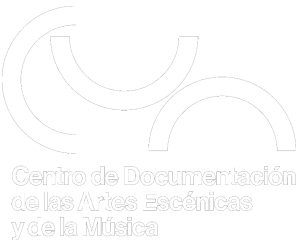"Los condenados" y "Alma y vida" : Tropiezo de un consagrado autor teatral / Rosa Amor del Olmo . Monográfico ; 4
Tipo de material: Recurso continuoSeries Monográfico: Benito Pérez Galdós en la escena ; 4Descripción: 8 páginas ilustracionesTipo de contenido:
Recurso continuoSeries Monográfico: Benito Pérez Galdós en la escena ; 4Descripción: 8 páginas ilustracionesTipo de contenido: - Texto
- electrónico
- 2174-713X
| Tipo de ítem | Biblioteca actual | Colección | Ubicación en estantería | Signatura topográfica | Info Vol | URL | Estado | Fecha de vencimiento | Código de barras | |
|---|---|---|---|---|---|---|---|---|---|---|
 Documentos-e (locales y remotos)
Documentos-e (locales y remotos)
|
CDAEM | PUBCDAEM | Argumosa | PP Don Galán | 2020. Nº 10 | Enlace al recurso | Disponible | 0032524809425 |
Resumen: El ideal estético de Galdós es un elemento pleno de pureza. Los escritores de teatro, en su mayoría, viven de una negociación a favor del espectador, en detrimento de su libertad creadora. De cierto sabemos que es así. El autor teatral, al tener un contacto mucho más directo con la sociedad que un novelista, se llena de prejuicios. Si su obra no continúa en cartel, y “se va al foso”, como se dice en la profesión, las pérdidas son innumerables. No sólo pierde el autor al ver que su obra no tiene acogida, sino que las pérdidas económicas sucedidas después de un fracaso revierten sobre el autor de forma muy directa. Pérdidas en los materiales de decoración y escenografía, de vestuario... La compañía se queda sin trabajo, tirando a la borda horas y horas de ensayos. Pero lo más enigmático, quizás, como Galdós declaró en sus prólogos a Los Condenados y Alma y vida, son las razones por las que se definen el fracaso o el éxito. A esta cuestión dedica Galdós gran parte de sus reflexiones, sin llegar a dilucidar ninguna conclusión. La magia del teatro que tanto le atrajo, tiene como primera premisa la aleatoriedad de su funcionamiento y las pocas previsiones de éxito que se pueden estimar. Fascina el hecho de que los resultados nunca serán previsibles.
LOS CONDENADOS AND ALMA Y VIDA:
A STUMBLING BLOCK OF A RENOWNED PLAYWRIGHT
Abstract: Galdós' aesthetic ideal is a full element of purity. The theatre writers, for the most part, live on a negotiation in favour of the viewer, to the detriment of their creative freedom. We certainly know that's the way it is. The theatrical author, having a much more direct contact with society than a novelist, is filled with prejudice. If his work does not continue on the poster, and “goes to the pit” as it is said in the profession, the losses are innumerable. Not only does the author lose to see that his work is not received, but the economic losses that occurred after a failure revert to the author very directly. Losses in decoration and scenography materials, costumes... the company runs out of work, throwing away hours and hours of rehearsals. But the most enigmatic thing, perhaps, as Galdós declared in his prologues to Los Condenados and Alma y vida, are the reasons why failure or success are defined. Galdós devotes much of his reflections to this issue, without reaching any conclusions. The magic of theatre that attracted him so much, has as its first premise the randomness of its operation, and the few forecasts of success that can be estimated. It is fascinating that the results will never be predictable.
No hay comentarios en este titulo.

